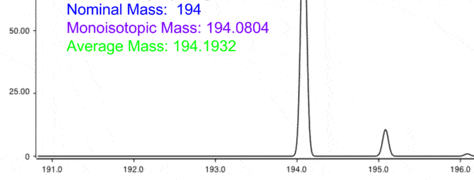Metabolomics may sound like a fictional character in the famous comic series “Asterix”, but it is very important in understanding systems biology and in clinical research against various diseases.
Metabolomics is the last piece of a puzzle of omics applications following genomics, transcriptomics, and proteomics. It allows us to ask “What has happened and what is happening” by studying the entire living organism.
The reasons it came last are:
- Our failure to appreciate the significance of metabolic alterations in an organism, and
- The lack of technological advances required to analyze a metabolome.
But what exactly is the “metabolome” of an organism and why is it so important?
Enjoying this article? Get hard-won lab wisdom like this delivered to your inbox 3x a week.

Join over 65,000 fellow researchers saving time, reducing stress, and seeing their experiments succeed. Unsubscribe anytime.
Next issue goes out tomorrow; don’t miss it.
History and Definition of Metabolomics
The emergence of the word was a natural consequence of our effort to describe the holistic approach in understanding the secondary metabolism of an organism. The term, metabolomics, was firstly formally introduced in a scientific paper regarding the functional analysis of the yeast genome1 in 1998. Little by little it became a trend.
“Metabolome” refers to the complete list of small molecules that exist in a biological sample. Inside a cell, these small molecules may refer to by-products of the secondary metabolism like fatty acids, amino-acids, sugars, polyols, phosphates, organic acids, nitrogen containing compounds etc. You can also apply metabolomics to extracellular metabolites or in any other biological sample, like plasma or urine.
Modern technology allows us to detect many (but not all) metabolites in a biological sample. “How is that possible?”, you may ask.
Biologists quickly understood that to better estimate the metabolome in a biological sample, they ought to cooperate with chemists who had years of experience in the analysis of the chemical properties of small molecules. Tools like gas chromatography (GC), liquid chromatography (LC), and mass spectrometry (MS) have been available for years now and are proven precise, consistent and cutting-edge technologies. Putting them together gave the tools necessary for metabolomic studies.
The Science Behind Metabolomics
I’m not a chemist, so discussing the details of how a chromatographer (GC/LC) or a mass spectrometer (MS) work wouldn’t be the smart thing to do. But I do like American football and I do know one thing. If you line up a nose tackle and a running back to run 100 yards, their time of arrival will vary and you will be able to separate them. This is how, more or less, GC/LC work. Because the metabolites have different properties, if you put them all together to “run” a specific distance, they will separate depending on numerous factors such as boiling time, polarity, or the temperature of the column and so they arrive at the detector as separate peaks according to their (retention) time.
By fusing an MS to a GC/LC, the metabolites are then ionized and exposed to an electromagnet. The deflection of their path by the magnet determines the mass/charge ratio (the infamous m/z ratio), which is unique for every metabolite.
Now you know two properties for every compound; the time it took for them to travel a known distance in the GC/LC and their m/z ratio. By having a library available with known metabolites identifying everyone’s retention time and m/z ratio, you can use the library to identify unknowns in your sample. Furthermore, the area of the peak of a certain metabolite also gives information regarding its comparative (NOT absolute) quantity to other metabolites in the sample.
So, now you know how qualitative and quantitative information can be extracted from a biological sample. Are you ready for your experiment?
How to Get Started
Here are some factors you should take into consideration before even trying to design your metabolomics experiment.
- Sometimes when trying to see the tree, you lose the forest. Metabolome alterations should be monitored as a whole in the “metabolite fingerprint” picture. Although specific metabolites are important, complex samples, like plants, tend to alter hundreds of metabolites under different abiotic or biotic stresses. Always try to think of the “big picture”.
- Targeted or untargeted? Depending on what you are interested in, you have to choose between targeted analysis, in which you will be able to identify a fraction or a group of the metabolites you are trying to analyze, or untargeted analysis in which you are interested in more complex results, larger datasets, and a highly difficult interpretation.
- The method of extraction is a very important factor in the study and is strongly connected to the technology you use to analyze your sample.
- The choice of the technology to use is maybe the most important question you have to ask yourself. MS, MS-MS, HPLC, LC-MS, GC-MS, CE-MS are just some of the options (and not random letters written) you have available. Do your research to determine which is the best for your study.
What About Diseases?
There are numerous studies establishing diagnostic biomarkers for a variety of diseases after comparing changes in the metabolome motif between healthy and ill individuals with similar symptoms. A biomarker is nothing more than a detectable and/or measurable indicator of a biological state or condition and can be in our case a specific metabolite or more commonly a group of metabolites. By comparing the metabolic profile of different samples (saliva, plasma, blood etc.), we can detect variations of specific or grouped metabolites and possibly associate them with a specific disease.
Instruments we own nowadays have made it possible to pinpoint even the smaller deviations. From oncology and oral or breast cancer2,3,4, to maternal-fetal cases to understand complicated pregnancies5 or even diabetes and obesity cases6, metabolomics have proven little by little to be of high interest in the detection of biomarkers associated with various conditions. It is becoming a major ally in their detection and possibly prevention at some point. And this is just the start.
This is just an introduction to pique your interest regarding metabolomics and the potential that it can have in the future. Hop on and enjoy the ride!
You made it to the end—nice work! If you’re the kind of scientist who likes figuring things out without wasting half a day on trial and error, you’ll love our newsletter. Get 3 quick reads a week, packed with hard-won lab wisdom. Join FREE here.








